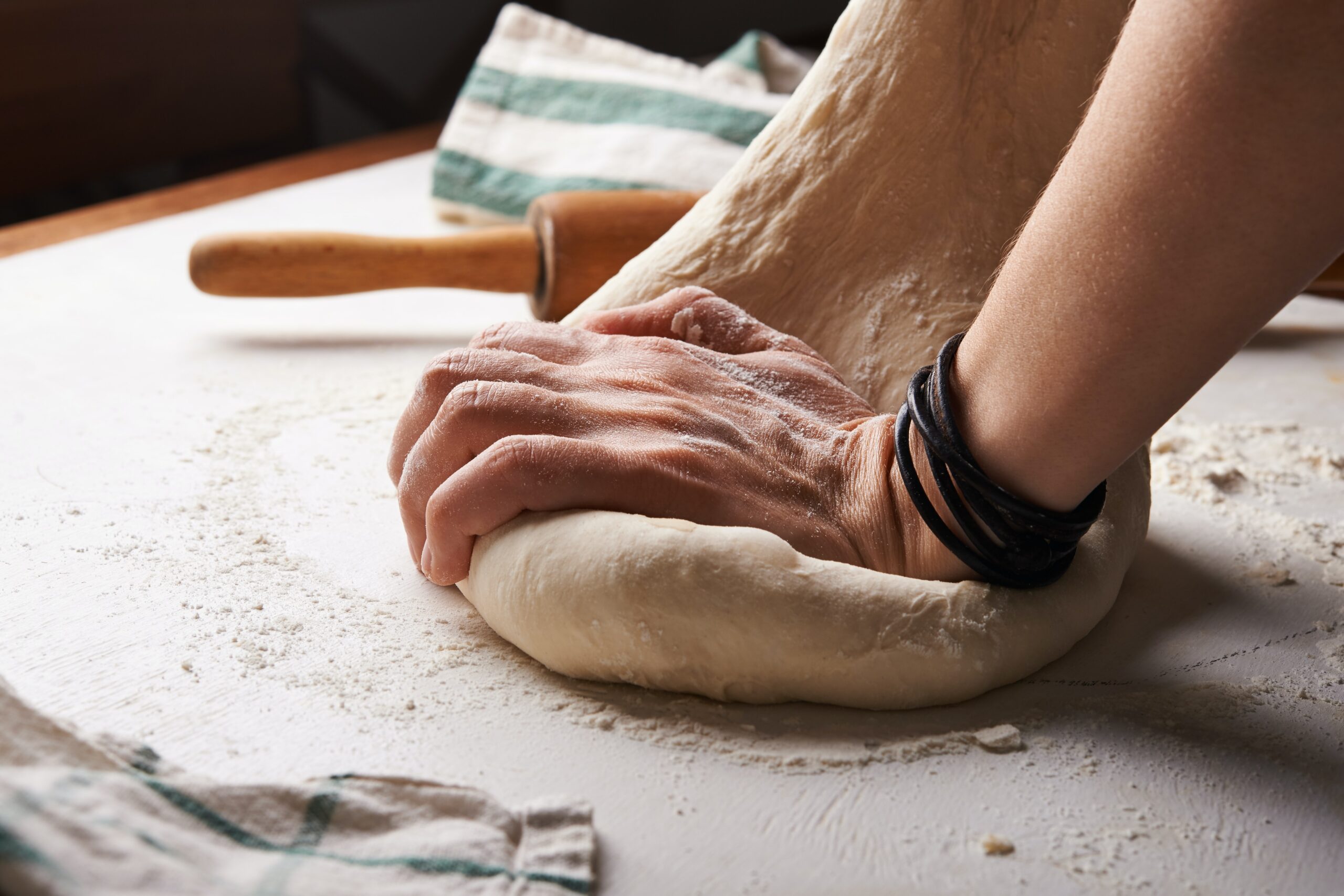Dough that hasn’t been cooked can often be kept in the fridge for 3-5 days. Before baking, you might need to punch down and reshape the dough because it will continue to rise in the refrigerator. The dough can also be frozen for longer storage.
The dough should be carefully wrapped in plastic wrap before going into a freezer bag to be frozen. For up to three months, the frozen dough can be kept in the freezer. When the dough is ready to be used, defrost it in the refrigerator until it is soft and malleable. Then, shape and bake the dough as desired.
How Long Does Dough Last On The Counter?
Dough shouldn’t often be kept on the counter for an extended period of time. Unbaked dough will continue to rise if left out at room temperature, and it may eventually grow too big and difficult to handle. The dough may rise too rapidly or too slowly depending on the temperature and humidity of your kitchen.
The dough should be fine if you need to leave it out on the counter for a short while (30 minutes to an hour), as long as you cover it to protect it from drying out. However, if you won’t be using the dough right away, it’s better to store it in the refrigerator as this will assist to reduce the rising process and keep the dough fresher for longer.
How Can You Tell If Dough Has Gone Bad?
Several indicators suggest that the dough may have gone bad:
- The aroma is sour: It is probably preferable to toss the dough if it smells sour or unpleasant.
- It has a moldy appearance: It is advisable to discard the dough if there is any visible mold on it.
- It is oddly colored: It’s usually advisable to toss the dough if it has become a weird color, like a yellow or green tint.
- It has an odd texture. The best course of action is generally to discard the dough if it has a slimy or sticky quality.
When it comes to food safety, it’s usually preferable to err on the side of caution, so if you’re unsure whether the dough is still good, it’s best to toss it out.
What Is The Best Way To Store Dough In The Fridge?
Wrapping dough firmly in aluminum foil or plastic wrap is the ideal method for storing it in the refrigerator. As a result, the dough won’t dry up and won’t pick up any unpleasant smells from other items in the refrigerator.
For an added measure of security, you can also put the wrapped dough in a sizable, sealable plastic bag. The rear of the refrigerator, which is often the coolest portion of the fridge, may be a good option if you’re storing the dough for more than a few days. The dough will stay fresher for a longer period of time and will help prevent excessive rise.
Is There Anything That Can Be Added To The Dough To Extend Its Life?
Dough can benefit from the following additions to help increase its shelf life:
- Sugar: Sugar prevents bacteria from growing, which helps to preserve the dough.
- Salt: Salt can help keep the dough from spoiling by preventing the formation of bacteria and by removing moisture from the dough.
- Acid: By preventing bacterial growth, acidic additives like vinegar or lemon juice can help preserve the dough.
- Alcohol: By preventing bacterial growth, alcohol can help keep the dough fresh.
- Spices and herbs: Some herbs and spices, including thyme and oregano, have antibacterial characteristics that can help keep the dough fresh.
You might need to modify your recipe in light of the fact that these additions will also impact the flavor and texture of the dough.
Do You Need To Do Anything To Dough Before Cooking After It Has Been Stored In A Fridge?
It may be necessary to pound down and reshape dough before cooking if it has been chilled and has greatly risen. To accomplish this, just deflate the dough with your fist before molding it into the proper form.
You might need to let the dough remain at room temperature for a while to let it to warm up and become more flexible if it has gotten too dry or hard after being kept in the refrigerator. It will be simpler to handle and shape as a result.
Before shaping and baking the dough, it may need to defrost in the refrigerator until it is soft and malleable if it was frozen and you are doing so before cooking. Depending on the amount of the dough, this may take many hours or even an entire night. You can shape and bake the dough anyway you choose after it has defrosted.
Relevant Articles
Does Gluten-Free Bread Taste Different To Regular Bread?
Why Is Gluten-Free Bread So Expensive?

Comments are closed